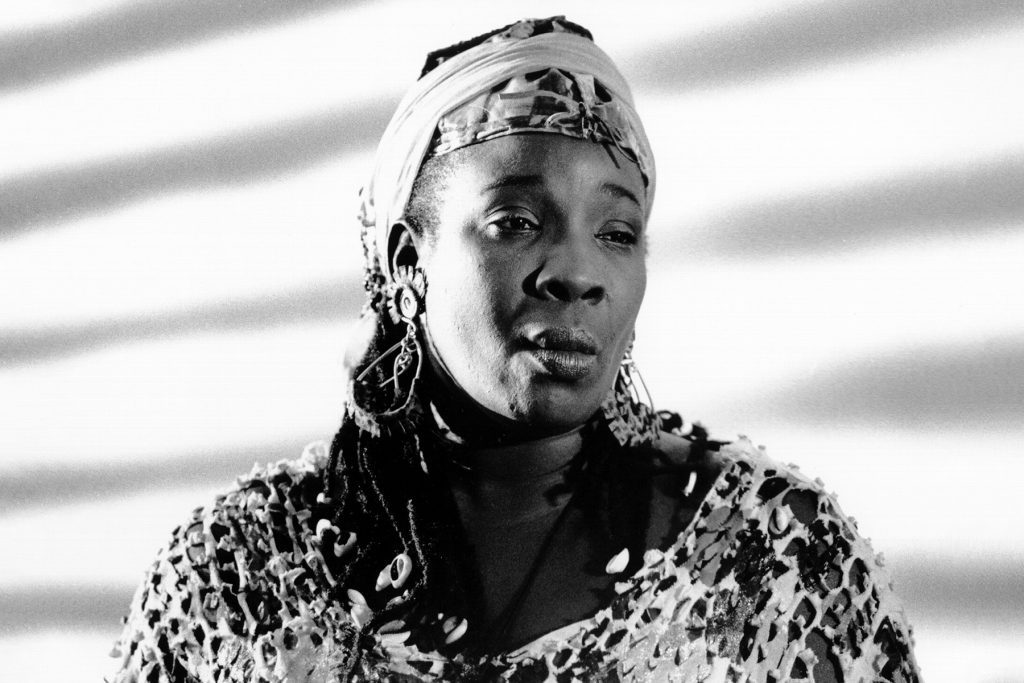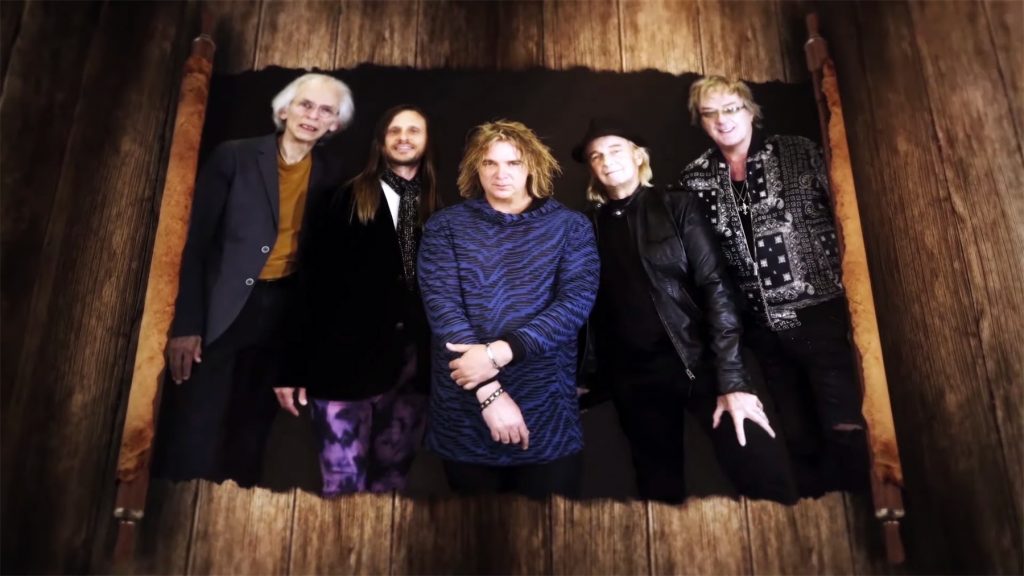
‘They Wanted Her to Shut Up and Be a Widow’: How Rita Marley Overcame Tragedy and Revived the Family Brand
Decades after she and Rita Marley toured with Bob Marley, Marcia Griffiths still does a good impression of the woman she calls Sister Rita marching into her late husband’s dressing room after a show. “’Come on, come on — time to go!’” Griffiths says with a laugh, slapping her hands together to imitate Marley’s efficient manner. “She was responsible for making sure Bob was OK and that he was taken care of. Not too much crowd in his room; she would get rid of all of these people who were hanging out. We called her the mother hen. She was on top of it all.”
Ensuring that her husband was able to rest after a performance turned out to be the least of Marley’s accomplishments. Before Bob Marley’s death — 40 years ago this past May — Rita Marley was the mother of three of his children, and one of his backup singers. In the years since, Marley took on an entirely new set of jobs, including making her own records, like her ebullient solo debut from 1981, Who Feels It Knows It.
blogherads.adq.push(function () {
blogherads
.defineSlot( ‘medrec’, ‘gpt-dsk-tab-article-inbody1-uid0’ )
.setTargeting( ‘pos’, [“mid-article”,”mid”,”in-article1″,”mid-article1″] )
.setSubAdUnitPath(“music//article//inbody1”)
.addSize([[300,250],[620,350],[2,2],[3,3],[2,4],[4,2]])
;
});
But more importantly, and sometimes controversially, she took on oversight of his estate and business. Under her guidance, the Marley empire now includes a Bob Marley Museum and a recording studio (both in Kingston), a vinyl and CD pressing plant, record stores and a book division, and an onslaught of family-approved merch: cannabis and body-care products, headphones and other audio gear, coffee, and even a just-launched line of “functional mushrooms” (where they can be legally sold). A few years after Bob died, an audit of his estate came up with a mere $250,000. These days, the family business — now run by Rita and Bob’s second-oldest child, Cedella — routinely earns at least $20 million a year and is valued at five times that amount. “I never see myself as Bob Marley’s widow,” Rita said in 2000. “I still feel I’m working with him. I feel I’m still his partner.”
On Sunday, Marley turns 75, a milestone that’s become even more significant given her recent health issues: In 2016, she suffered a stroke — her seventh. The birthday has also made those around her take stock of her contributions. “One of the things that we’ve all kind of taken for granted is when someone is really good at doing something, you don’t realize how much they’re doing,” says Myshjua Allen Murray, a longtime family friend who serves as executive label manager for the music division, Tuff Gong International. “When we started talking about her 75th birthday, we started looking at Tuff Gong, at it being 40 years since the passing of Bob Marley and the reason that the museum and Tuff Gong Studios exists is because of the work she’s put in.”

Bob Marley with the I Threes in Belgium, June 1980
Gie Knaeps/Getty Images
The Marley birthday festivities began last week, with a tribute show on the family’s Tuff Gong radio channel on SiriusXM that included covers of her songs by female reggae artists like Marley’s former I Threes bandmates Griffiths and Judy Mowatt. This Sunday, the family’s YouTube channels will commemorate with a new mini-documentary on Rita and a preview of the new exhibition of her life at the Marley museum, where fans can see, among other items, the colorful costumes she wore onstage when she backed her husband. Remakes and remixes of her songs, featuring children like Cedella and Sharon (Rita’s daughter from a previous relationship, who was adopted by Bob), are also in the works.
The celebrations are a reminder of the hurdles and challenges Marley faced. She’s been a lightning rod for criticism, and, with her family, has faced legal challenges to the estate and money since Bob’s death. She also had to grapple with a double whammy: trying to be a woman in power in both the male-dominated music business and the male-dominated Rastafarian world. “In that culture, women are to be seen and not heard,” says Cedella of Rastas. “With Daddy passing, she had to become very vocal. Certain people in the Rastafarian faith were saying, ‘No, no, no, let da man handle it.’ What man? There’s no man. The man is gone. And there’s no backup man. It’s the woman.”
blogherads.adq.push(function () {
blogherads
.defineSlot( ‘medrec’, ‘gpt-dsk-tab-article-inbody2-uid1’ )
.setTargeting( ‘pos’, [“mid-article2″,”mid”,”in-article2″,”mid-article”] )
.setSubAdUnitPath(“music//article//inbody2”)
.addSize([[300,250],[300,251],[620,350],[2,4],[4,2],[3,3]])
.setLazyLoadMultiplier(2)
;
});
Marley seems more than ever like a forerunner to artists like Beyoncé, who are in charge of their own operations; notably, Marley appointed women to some of the divisions of Tuff Gong. “In 1981, it wasn’t normal for a woman to say, ‘I’m going to take up my husband’s business,’” says Murray. “She wasn’t an MBA. She wasn’t Colonel Parker. And no one wanted her to be. They wanted her to shut up and be a widow and let them all run it the way they thought it should be run. And when she didn’t do that, they didn’t like her very much. Before the MeToo movement, she did it, with people wishing she was dead. As women in this business, it hits home for us.”
As Marley tells IndieLand by email, “We are given many burdens to carry. It is in working to overcome them that we grow strong.”
Little of Marley’s path was preordained. She was born Alferita Anderson in Cuba, and her parents moved to Kingston, Jamaica, when she was three months old. After her parents separated, she was raised by an aunt. She studied as a nurse and sang in church, and before long was in a vocal group. It was through that group that she met Robert Nesta Marley, who had already cut a slew of singles with early versions of the Wailers. Marley began coaching Rita’s singing group (the Soulettes) on singing and record-making, and even though he was a tough boss, he was drawn to Rita in other ways. “He was sending his letters through his friends, not by himself, through his friends, to say that he liked me and wanted to come over and talk,” Rita recalled later. It was Rita who also introduced her husband to Rastafarianism.
The two married in 1966. Eventually, Rita became an integral part of Bob’s music when the I Threes came together during an impromptu jam at a Jamaican club. As Griffiths recalls, Rita’s voice was an ideal match for Bob’s. “Her tone was unique,” Griffiths says. “Different from the normal voice. If we are onstage performing with Bob, Rita is the only person who could sing the same thing with Bob, and it’s not clashing. If Judy or I tried that, it wouldn’t be the same. Rita was the only person who could sing the melody with Bob.“
According to Cedella, her mother joined her father on tour for other reasons as well. “It was important for her to be on the road with Daddy because, you know, people go on the road and switch up real quick,” she says. “You can leave humble and turn into a monster. I’ve seen it happen. So she was like Yoko. She didn’t try to keep him away from friends, but she was a protective force.”
blogherads.adq.push(function () {
blogherads
.defineSlot( ‘medrec’, ‘gpt-dsk-tab-inbodyX-uid2’ )
.setTargeting( ‘pos’, [“mid”,”mid-articleX”,”in-articleX”,”mid-article”] )
.setSubAdUnitPath(“music//article//inbodyX”)
.addSize([[300,250],[300,251],[3,3],[620,350]])
.setLazyLoadMultiplier(2)
;
});
Life with Bob wasn’t always uncomplicated. He had other women in his life (he eventually had 11 children, only three with Rita). In 1976, Bob found himself in political trouble when a planned Wailers concert to heal their divided country was made to look like an endorsement for controversial prime minister Michael Manley, and Marley was the target of an assassination attempt. No one was killed, but as Rita was leaving the compound with some of their children, a gunman shot at her, and a bullet lodged between her skull and scalp. The bullet was removed by way of surgery. But her biggest challenge came when Marley died, from a form of skin cancer, and she decided to have an active role in her husband’s work. “You have everything happening around you — the good, the bad, the ugly, and the indifferent that will come out in people,” says Cedella. “She had to grow a very broad back to take on responsibilities she wasn’t prepared for. And that made a lot of people pissed when he passed, because they thought they were going to be the second in command.”
Murray, who went to work at Tuff Gong in the early Nineties, witnessed Marley’s soft-spoken power during meetings. “Jamaicans can be like Italians, very loud and passionate when they get going in these arguments,” she says. “But she would walk in the room and never raise her voice. She would say, you know, ‘What’s going on?,’ and the room would shift.” But sitting in Cedella’s office, its window open to a main street, Murray would also sense what happened after the meetings. “We could hear people talking as they’re walking by,” she recalls. “The same people who would come in and smile to your face and talk about all these things, and they’re grumbling, ‘This woman really thinks she just run everything.’ Even from friends of Bob Marley.”
Since Bob didn’t leave a will, the Marley estate fell into a legal quagmire soon after his death. After Rita was reportedly forced to sign a fake will in the late Eighties, control of the estate was initially taken away from her. The Jamaican government soon took control of the estate and sold it to Island Records head Chris Blackwell. After a lengthy court battle, the rights to Marley’s estate were returned to the family in 1991. To help her mother understand all the legalese, Cedella recalls poring over contracts together. “I would go through them with her over and over again to make sure we figured out what the big words were,” Cedella says. “Webster’s dictionary was our best friend.”
blogherads.adq.push(function () {
blogherads
.defineSlot( ‘medrec’, ‘gpt-dsk-tab-inbodyX-uid3’ )
.setTargeting( ‘pos’, [“mid”,”mid-articleX”,”in-articleX”,”mid-article”] )
.setSubAdUnitPath(“music//article//inbodyX”)
.addSize([[300,250],[300,251],[3,3],[620,350]])
.setLazyLoadMultiplier(2)
;
});
Strangely, Rita was embroiled in a 1991 civil lawsuit by the Marley estate and its then-administrator, which claimed she and a family lawyer and accountant had defrauded the estate up to $20 million. Marley was accused of forging checks by signing them in her husband’s name. While admitting to having done so, she claimed she wasn’t aware of what exactly she’d been signing and was ultimately cleared of charges (although the lawyer and accountant had to pay back more than $2 million to the estate). “I thought I did the right thing,” she said at the time. “I would never defraud the estate because then I would be defrauding myself, and that would be crazy.”
According to family, the money was meant to financially support those who’d been in Bob’s inner circle. “She was doing what she thought Bob would have wanted, to pay the Wailers for the rest of their lives, and for my grandmother to live a fabulous life,” says Cedella. “And then it all turned around on her. The court said, ‘Well, no, we don’t care if that’s what Bob would have wanted. It’s illegal.’ So it was a double-edged sword: You think you’re doing the right thing and just really trying to please everyone, but not understanding the complexities you have to deal with when it comes to an estate. The people she trusted were condemning her, so it was a little confusing. She got through that. But it did take a heavy toll on her.”

Rita Marley in Kingston, circa 1985
Lee Jaffe/Getty Images
Gradually, Marley’s own music career wound down as the duties of her new role increased. The family was routinely drawn out to fight bootlegged and unauthorized merchandise and took Universal Music to court in 2008 for alleged underpayment of digital royalties (the suit was settled out of court). In 2000, she launched the Rita Marley Foundation, first in Ghana (where she and many family members moved about 20 years ago) and later in Jamaica. The nonprofit organization aims to eliminate poverty in economically devastated communities. The Jamaican branch of the Foundation also provides music lessons, public-speaking competitions, and organic-farming instruction for students and youths along with health-care programs for the elderly. In Ghana, the foundation has built a home for the elderly. In 1993, Rita appointed Cedella (also an actress, singer, and author) as CEO of the Marley companies, a role she retains.
blogherads.adq.push(function () {
blogherads
.defineSlot( ‘medrec’, ‘gpt-dsk-tab-inbodyX-uid4’ )
.setTargeting( ‘pos’, [“mid”,”mid-articleX”,”in-articleX”,”mid-article”] )
.setSubAdUnitPath(“music//article//inbodyX”)
.addSize([[300,250],[300,251],[3,3],[620,350]])
.setLazyLoadMultiplier(2)
;
});
After Rita’s most recent stroke five years ago, Cedella moved her mother to Florida so that she could be closer to her family. As Cedella says, “I said to her, ‘You’ve worked all your life, and this is God’s way, as cruel as it might seem, of saying you need to just relax now. The grave is not calling you, so I’m’a just make you chill.’ So that’s how we look at it.”
Although Rita is still coping with the aftereffects of that stroke, Cedella still sees glimmers of the “fierce” woman she’s known. “I know when she’s watching too much YouTube because her [blood] pressure goes up,” says Cedella. “She was just watching something on Instagram about the flood in Jamaica for the storm that just passed. I had to tell her, ‘Mom, you have to stop watching this stuff because it’s not healthy.’ She thinks Trump doesn’t like black people, and she was very nervous about what she saw happening in America with the election.”
Rita nixed an outside proposal for a particular novelty product, says Cedella: “She was like, ‘No bobblehead, no, no.’ She thought it made Bob look funny. And she was right.” According to Cedella, her mother is also actively involved in the Marley One mushroom line. “That’s her, 24/7,” she says. “We have one that is for the mind and cognitive stuff, and she takes it in the morning. And then we have another one to level off your mood. She sampled every single one. She was the taste tester. She’s very excited about Marley One, I must say.”
Yet for those around her, Marley’s legacy remains deeper and broader. Murray recalls a press conference for Rita’s Harambe album in 1982, soon after she had begun running the Marley business. “Instead of these reporters asking about her music and all of the things I loved her for, they were kind of mean and accusing,” she says. “I was waiting on her to tell them all off, but she just smiled and redirected the questions back to music and the vision she and Bob had. She stayed so gracious. Afterwards, I was crying, and she said, ‘Look, what’s the matter?’ I said, ‘How could they say those things about you?’ And she said, ‘We already know who we are and why we’re here. We have work to do. It doesn’t matter what they say. Our work speaks for itself.’”
blogherads.adq.push(function () {
blogherads
.defineSlot( ‘medrec’, ‘gpt-dsk-tab-inbodyX-uid5’ )
.setTargeting( ‘pos’, [“mid”,”mid-articleX”,”in-articleX”,”mid-article”] )
.setSubAdUnitPath(“music//article//inbodyX”)
.addSize([[300,250],[300,251],[3,3],[620,350]])
.setLazyLoadMultiplier(2)
;
});




